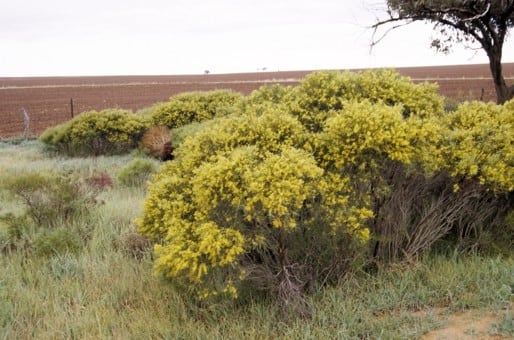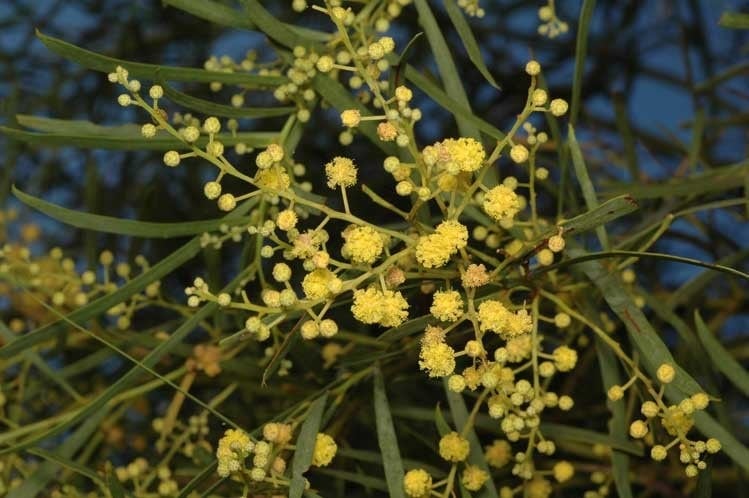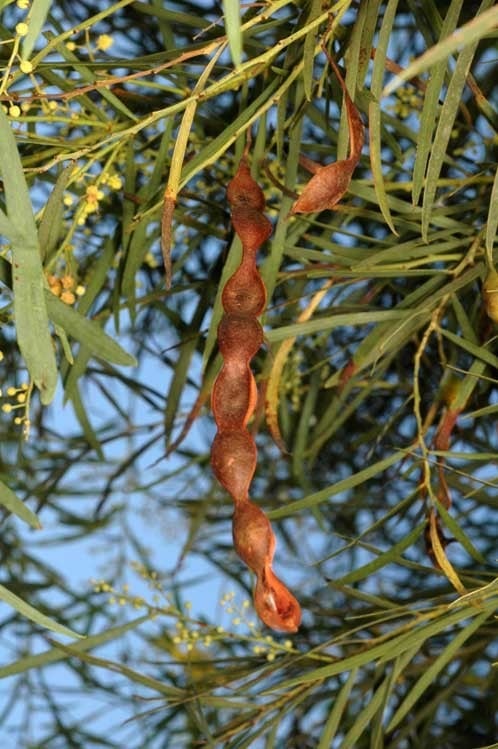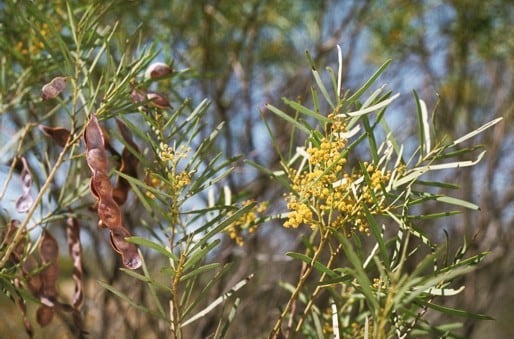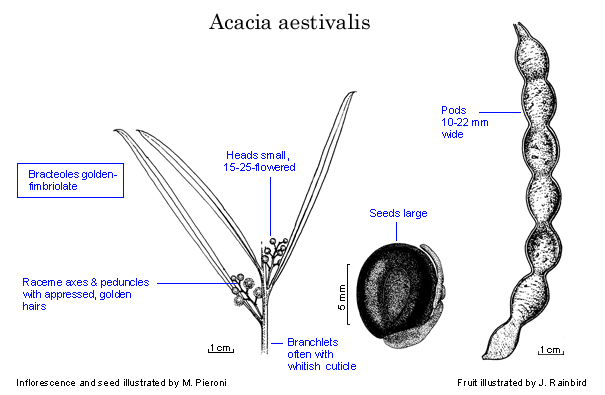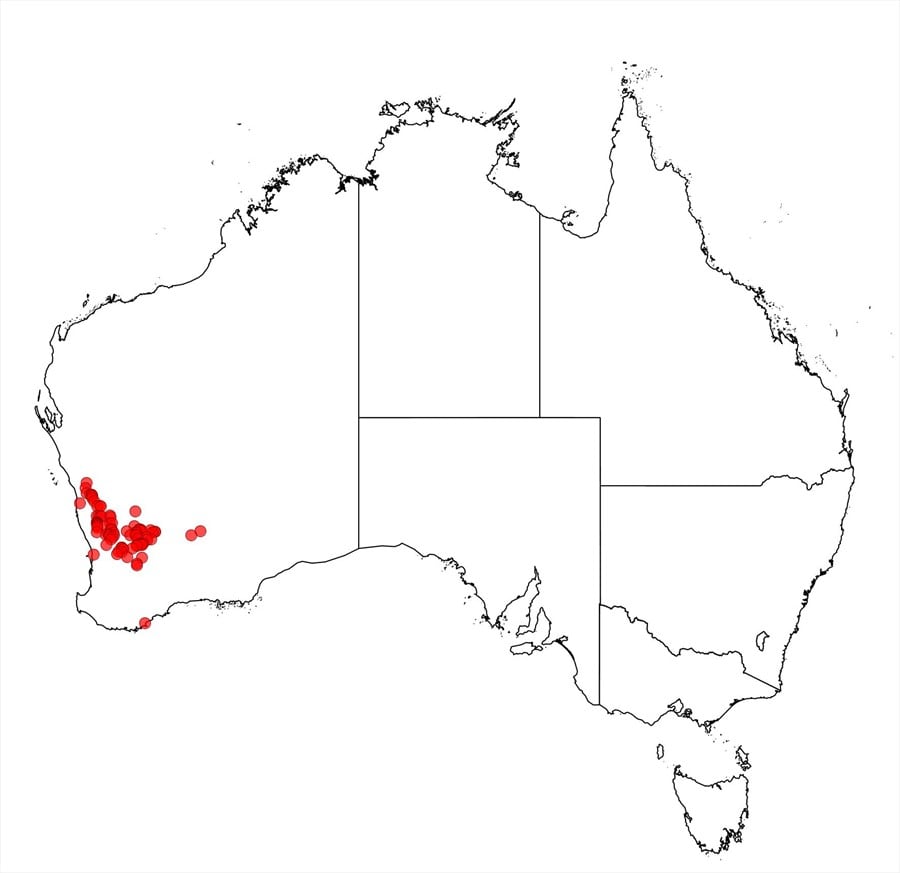Acacia aestivalis E.Pritz.
WATTLE
Acacias of Australia
Family
Fabaceae
Distribution
Occurs from near Mingenew SE to Corrigin and E to Bullfinch, W.A.
Description
Bushy shrub or tree to c. 3 m high. Branchlets glabrous; cuticle often whitish. Phyllodes linear to narrowly oblanceolate, ±straight, (5–) 6–11 (–13) cm long, (1.5–) 2.5–7 (–9) mm wide, obtuse to acute, sometimes uncinate, glabrous, sometimes with whitish cuticle; midrib and lateral nerves not prominent; glands 1 or 2, with lowermost 1–3.5 cm above pulvinus. Inflorescences 5–11-headed racemes; raceme axes (3–) 10–50 mm long, sparsely to densely appressed-puberulous with golden hairs, often glabrous in fruit; peduncles 2.5–5 mm long, with indumentum as on raceme axes; heads globular, 3.5–4 mm diam., 15–25-flowered, golden; bracteole laminae golden-fimbriolate. Flowers 5-merous; sepals united almost to apex in bud, often separating to base at anthesis. Pods to 17 cm long, 10–22 mm wide, firmly chartaceous to thinly coriaceous, glabrous. Seeds longitudinal, oblong-elliptic, 7–9 mm long, dull, dark brown; funicle 1/3–1/2 encircling seed, red-brown, brittle, readily detaching from aril.
Habitat
Grows in clay and loam, often in low-lying areas, frequently in Eucalyptus salmonophloia woodland; often forming dense pure stands in disturbed sites.
Specimens
W.A.: 18.5 km S of Konnongarring, B.R.Maslin 1632 (MEL, NSW, PERTH); 42.6 km S of Dalwallinu on the hwy, M.D.Tindale 1361 (K, NSW, PERTH); 21 km W of Bullfinch, P.G.Wilson 6447 (K, L, MEL, NSW, PERTH).
Notes
A variant from near Ravensthorpe is seemingly intermediate between A. aestivalis and A. harveyi (e.g. B.R.Maslin 3923, PERTH). Some plants from Kununoppin–Bullfinch area with phyllodes 2.5–4 mm wide are especially difficult to distinguish from A. chrysella in the absence of pods.
One of the ‘A. microbotrya group’, near A. chrysella, which has narrower pods, smaller seeds and phyllodes that are often narrower and incurved; also close to A. harveyi which has much shorter, narrower pods. Phyllodes of A. aestivalis may resemble those of A. anthochaera.
FOA Reference
Data derived from Flora of Australia Volumes 11A (2001), 11B (2001) and 12 (1998), products of ABRS, ©Commonwealth of Australia
Author
B.R.Maslin
Minor edits by J.Rogers
This identification key and fact sheets are available as a mobile application:
URL: https://apps.lucidcentral.org/wattle/
© Copyright 2018. All rights reserved.
